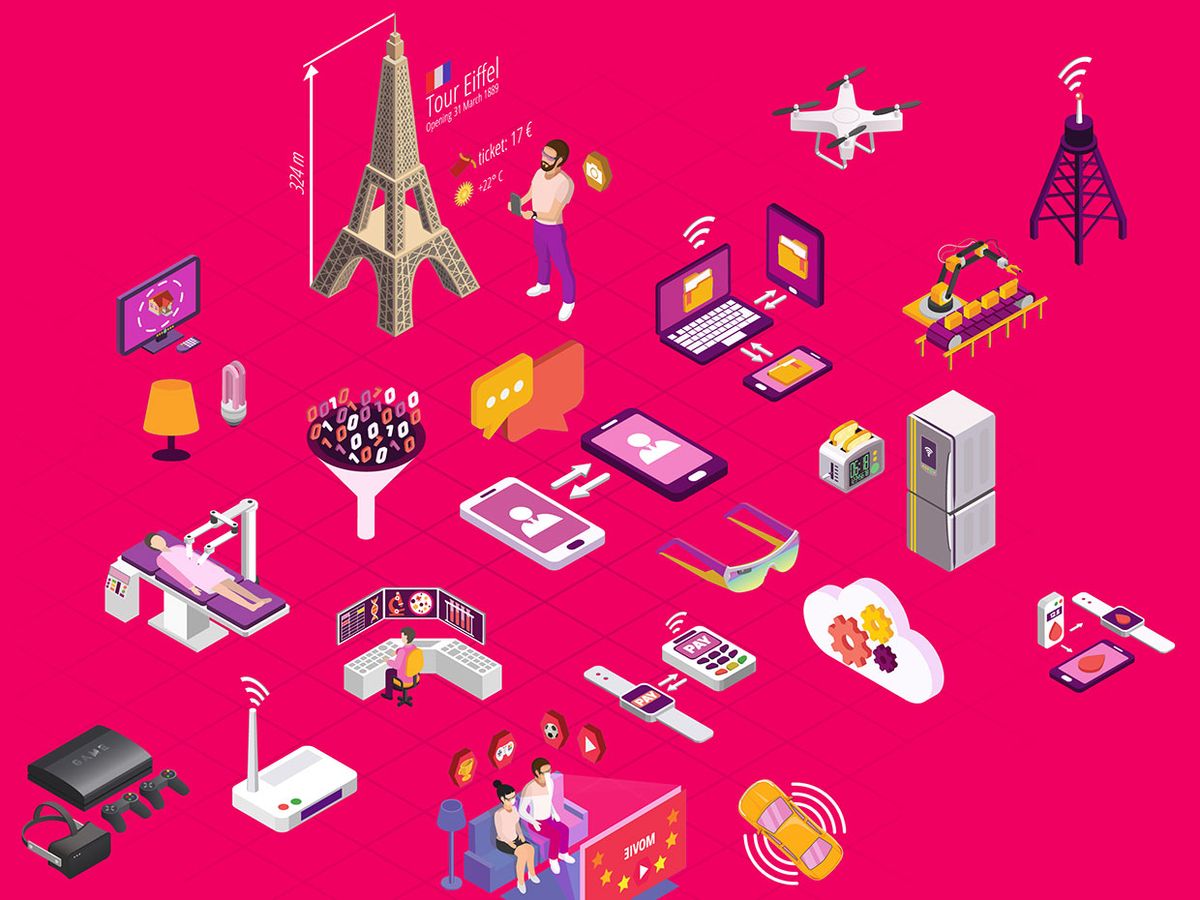So you've been hearing about 5G. It's a new generation of wireless communications, you've probably heard. You may have even heard that it will do flashy things like empower the Internet of Things or usher in self-driving cars. But in all that, you haven't heard much about what it's going to do for you, personally. In your frustration, you may ask yourself, what the gosh-darn heck is the point of 5G?
Last week, I spent four days at MWC Barcelona 2019 (formerly called Mobile World Congress) trying to answer that question. As it turns out, those in the industry have a lot of ideas about how 5G will be used, and when we'll see those applications emerge. Depending on who I talked with, they were excited about robots or virtual reality, the Internet of Things or autonomous vehicles.
However, those specific use cases might not be the real reason to be jazzed about 5G. In a sense, 5G is just another generation of wireless technologies. But it's also the first time that the smartphone will no longer be our primary gateway into the wireless world.
Every new generation of cellular technology has brought more features to our phones. “2G was digital voice," says Ignacio Contreras, director for 5G marketing at Qualcomm. “3G was the first data services, 4G [was] mobile broadband, but always very centered on the phone. In 5G, one of the key differences [is], it's designed to serve all sorts of new different segments."
In fact, the potential of 5G seems far more open-ended than previous generations of wireless. And by shifting emphasis from the phone, the focus is already changing from selling a certain number of devices to thinking about complete wireless ecosystems.
“If you look at 2G, 3G, 4G, it's all about selling a SIM card," says Jane Rygaard, head of marketing for mobile networks at Nokia. “You might have sold a SIM card to a device, a sensor or something like that, but you still sold a SIM card." But Rygaard thinks this approach makes no sense for 5G.
“If we truly want to use 5G to its full potential," she says, “we need to stop selling SIM cards, stop selling the mindset of a subscription and start thinking, 'I'm selling a solution for creating the connectivity in a certain thing.'"
So what does that mean, that 5G is about creating connectivity in things?
After four days at MWC Barcelona 2019, my big takeaway is that 5G is a new solution to the last-mile problem. Building communications backbones—such as laying big fiber optic cables to move terabytes of data—is expensive but relatively straightforward. It's when providers have to think about how to connect every house, every apartment, and every store to that backbone that the expenses really balloon.
And houses and apartments are relatively straightforward, compared to something like a factory. “A factory actually deploys multiple communications systems for each and every use case," says Erik Josefsson, Ericsson's head of advanced industries. “I have factory owners coming and saying, 'It feels like the roof is coming down. I have kilometers of cabling. I have LoRa, Bluetooth, Zigbee, Wi-Fi.' It's getting tough. And that's where the vision with 5G comes in."
With 5G, Josefsson hopes that factories of the future would require little, if any, human interference—instead, robots and conveyor belts inside would communicate with one another, shifting positions and making their own adjustments based on the factory's needs at the time. “I think the industry has high hopes," Josefsson adds, “that this can help simplify complex environments."
So yes, when you upgrade your smartphone in the next year, or two years, or whenever, you'll likely end up with a 5G smartphone. But the key promise is a new way to connect more devices—and more types of devices—without requiring an overwhelming variety of communications technologies. Your smartphone will connect to networks via 5G, and your smart appliances will connect via 5G. So will air quality sensors on streetlamps, manufacturing robots in factories, and VR headsets for museum exhibits. In the years to come, perhaps self-driving cars will navigate city streets with 5G. And all of this means, ideally, that previously unconnected aspects of our lives might work together cohesively, without any hassle.
Of course, it remains to be seen how much of this technological future will come to pass. Service providers around the world are rolling out 5G networks now, but they are very much still a work in progress. It will take time until we see new devices and applications that can tap into these networks once they're finished. When that happens, though, there may be a lot more to be excited about than for any previous wireless generation. Just don't get hung up on the smartphone.
Michael Koziol is an associate editor at IEEE Spectrum where he covers everything telecommunications. He graduated from Seattle University with bachelor's degrees in English and physics, and earned his master's degree in science journalism from New York University.



